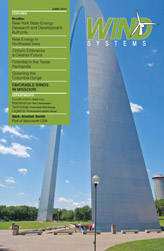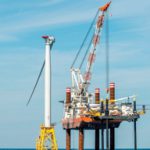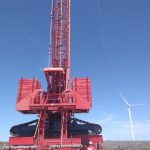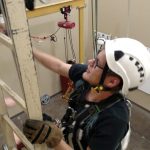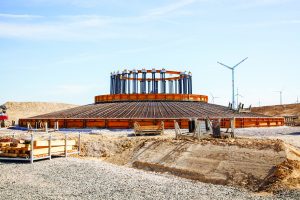Jobs in wind energy have been and are currently out there. The wind industry, though, is challenged with filling open positions with qualified candidates that received at least some education in wind energy. There are only a handful of academic institutions in the U.S. that have wind energy in some form integrated into their undergraduate and graduate curricula. Besides a few exceptions there is at most one course offered to engineering students, which presents in general only an overview of wind energy systems without technological depth in any system component. As far as graduate education is concerned, the U.S. is lagging behind flagship institutions in Denmark and The Netherlands. There are efforts underway that aim at developing graduate certificate programs in wind energy, however, and Penn State is one of these institutions.
Nevertheless, the industry is challenged with new hires that have had either little or no exposure at all to wind energy. This is true for all engineering disciplines including mechanical, aerospace, electrical, civil, and material science engineering. While new hires are experts in a certain area of specialization, it is difficult for employees to link and interface different engineering areas together. While the field of wind energy is a true systems engineering discipline, sufficient knowledge of the “other” engineering disciplines relevant to wind energy systems is missing. Consider the following questions: What does an aerodynamicist know about the relation between aerodynamics, rotor speed, and electrical generator technology? What do mechanical engineers designing gearboxes know about a civil engineer’s constraints/limits in weight and an aerospace engineer’s computational modeling of dynamic blade loads? What do all of the engineers mentioned know about turbulence and associated inflow conditions to the rotor disk governed by Atmospheric Boundary Layer (ABL) flow? In turn, what does a meteorologist know about the length and time scales of wind turbine wakes and the wake momentum recovery downstream of a wind turbine, and how that affects power production and prediction of a wind turbine array interacting with the ABL?
The interfaces between the disciplines are not well defined at present. However, the birthplace of innovative technology concepts is exactly here. In a rapidly changing energy market the competitiveness of wind energy as a reliable and affordable source of energy is contingent upon rapid prototyping of new technologies that enhance wind turbine system performance, lifetime, and reliability. New technology comes with an interdisciplinary educated workforce, but the fact of the matter is that we don’t have such a workforce at present. So the question is what can be done now to help the industry in training their engineers for the fast-moving wind energy sector?
Several short courses on wind energy related topics have been offered in the last couple of years. These offerings are either being held at international meetings, academic institutions, and/or other conference venues. While some focus on a specific topic within the wind energy systems envelope—e.g. grid interconnection, tower design and foundation, etc.—others approach the audience with an overview on the energy market and business models for the planning and permitting process of wind power plants. Current courses are not necessarily aimed at an exclusive engineering audience. Consequently, the need for interdisciplinary engineering education in wind energy as a driver for technology innovations is not being addressed.
The Wind Energy Working Group of The Pennsylvania State University developed a course in wind energy that exactly targets a diverse engineering audience. Technical depth for specific topics—e.g. atmospheric boundary layer flow, blade aerodynamics, electrical power generation, turbine towers and foundations, drive trains, experimental methods, energy market analysis, siting, and permitting, etc.—requires individual expert instructors that provide the breadth of knowledge in their area of specialization and at the interface to the “neighboring” engineering disciplines within the wind turbine system components. This course will be offered in the first week of August 2011. For more information, registration, and questions please visit www.wind.psu.edu/shortcourse. Also contact Susan Stewart at sstewart@engr.psu.edu me at the e-mail address listed below.
















